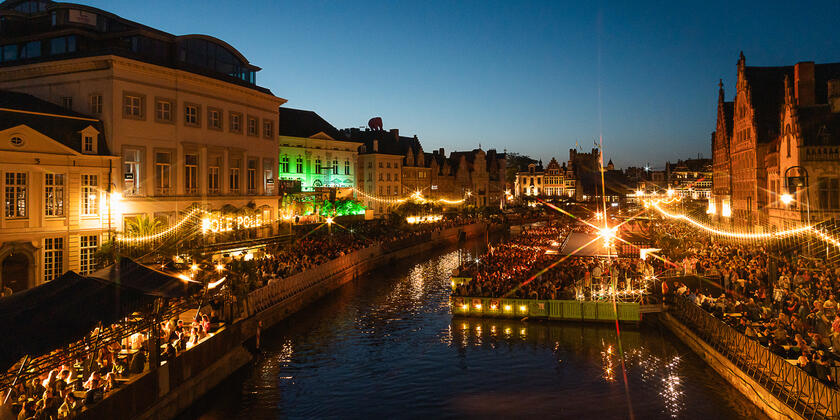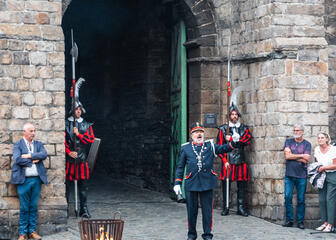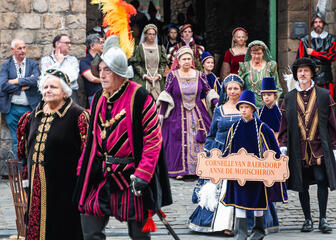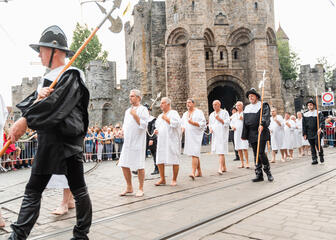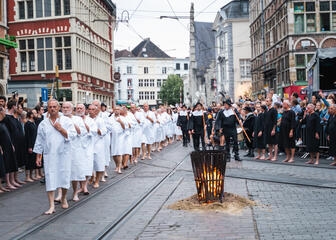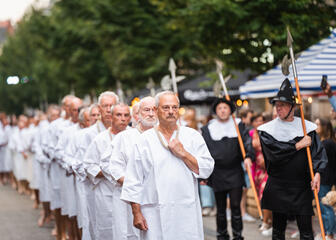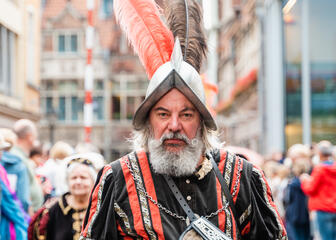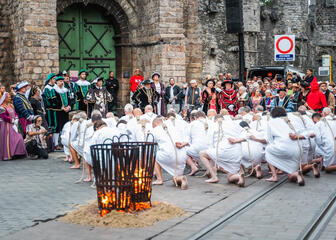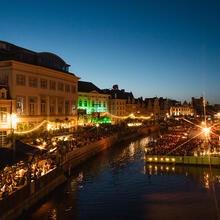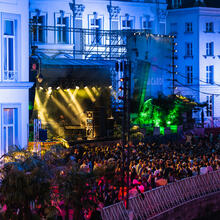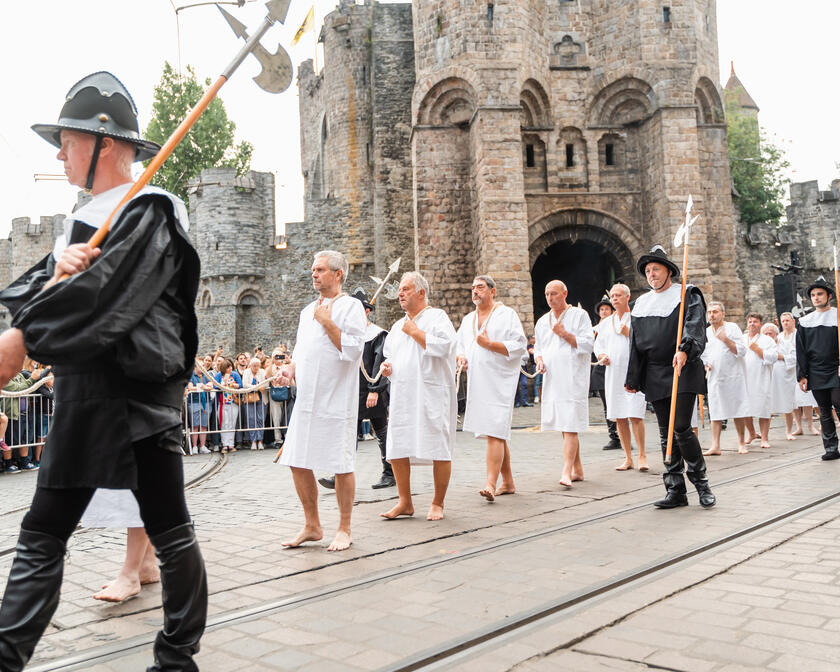
The Ghent Revolt
In Medieval times, Ghent was a prosperous city thanks to the cloth industry and trade. That changed in the 16th century, when the city was hit by an economic recession. During the Ghent revolt, the citizens of Ghent committed lèse-majesté and refused to pay taxes imposed by the emperor. Emperor Charles personally came to Ghent to resolve the matter. 25 participants in the revolt were sentenced to death. The emperor was not satisfied with the defence put forward by the city’s leaders and accused the city of disloyalty, sedition, mutiny and disobedience. The city lost all its privileges and freedoms.
The humiliating procession
On 3 May 1540, the Ghent citizens were subjected to total humiliation. They were marched through the streets from the town hall to Prinsenhof, the emperor’s palace. The procession consisted of the aldermen, clerks and all civil servants, 30 notable citizens and the deans of guilds, barefoot and dressed in black robes. They were followed by 318 members of smaller craftsmen guilds and 50 weavers. The procession was closed by 50 ‘creesers’ (screechers), dressed in white robes and carrying a hangman’s noose around their necks, as a sign that they deserved to hang. Once they had arrived at Prinsenhof, they had to beg the emperor for mercy.
Ever since, the citizens of Ghent have been nicknamed “stroppendragers” or “noose bearers”, as a symbol of resistance against tyranny and misplaced authority. During the annual procession, the emperor is booed and the noose bearers are applauded.
Route
The Castle of the Counts – Sint-Veerleplein – Kraanlei – Zuivelbrug – Grootkanonplein – Vrijdagmarkt – Kammerstraat – Belfortstraat – Botermarkt – Emile Braunplein – Klein Turkije – Korenmarkt – Groentenmarkt – Vleeshuishuisbrug – Sint-Veerleplein – The Castle of the Counts
This activity takes place on a location within the low emission zone
Are you driving to Ghent? First check whether you may enter the city centre with your vehicle. Clean vehicles may enter the city centre free of charge, polluting vehicles have to pay. Is your vehicle allowed to enter, but do you not have a Belgian or Dutch number plate? You will ALWAYS have to register!
